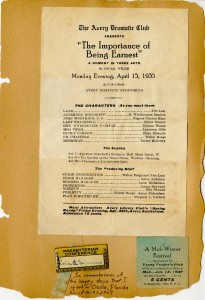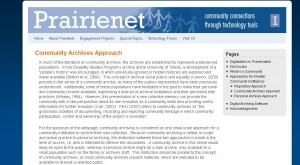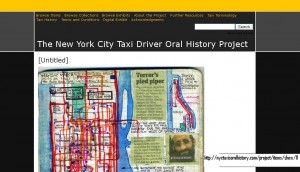Events
Upcoming
The past several months have been busy at Avery, with collections being processed and lectures occurring almost weekly. Our next lecture is on Thursday, March 22nd at 6pm featuring-Dr. Ronald E. Butchart, who will give a talk on his book Schooling the Freed People: Teaching, Learning, and the Struggle for Black Freedom, 1861—1876.
Previous
Check out our Facebook page for photos from our previous events including, but not limited to:
Women’s History Month talk by Distinguished Scholar Dr. Johnnetta B. Cole (Co-sponsored by Delta Sigma Theta Charleston Alumnae Chapter) and Women’s History Month Artist Marketplace
Children’s Sweetgrass Basket Making Workshop with Henrietta Snype
Ongoing
Celebrating Black Women in American Culture and History Exhibit (1st floor)
Word, Shout, Song: Lorenzo Dow Turner Exhibition (2nd and 3rd floors), which will be closing on April 4th, 2012
Archival Collections
National Association for the Advancement of Colored People (NAACP) Collection
The National Association for the Advancement of Colored People (NAACP) Collection has been processed and is comprised of 17 boxes divided into the following series:
1. Administrative, 1977-1994, and undated
1.1 Committees, 1977-1995, and undated
2. Programs and Events, 1975-1995 and undated
3. Publications, 1973-1994, and undated
4. Subject Files, 1920, 1960-1994, and undated
5. Photographs, 1992 and undated
6. Miscellaneous, 1987-1994, and undated
The following is a snippet of the abstract:
The National Association for the Advancement of Colored People (NAACP) was started on February 12, 1909, partly in response to the prevalence of lynching of African-Americans in America and the 1908 race riot that occurred in Springfield, Illinois. The Charleston Branch of the NAACP was founded in February 1917 by Edwin Harleston. The branch was established to advocate and fight for the rights of African Americans in South Carolina and Charleston.
The Charleston Branch of National Association for the Advancement of Colored People (NAACP) collection contains branch and
committee correspondence, financial records, materials relating to events and programs sponsored by the Association, subject files, photographs, and miscellaneous material.
Lois A. Simms Collection
Currently, I am processing Lois A. Simms’ personal papers. Simms graduated from Avery Normal Institute in 1937 and went on to pursue degrees in Education, English, and Social Studies. She taught in various elementary and high schools in Charleston before she retired in 1976. Simms remains an active member of Zion-Olivet Presbyterian church in Charleston. Furthermore, she is the author of Profiles of African-American Females in the Low Country of South Carolina (1992); Growing up Presbyterian: Life in Presbyterian Colleges and Churches (1992); and A Chalk and Chalkboard Career in Carolina (1996).
Items in her collection include papers from her higher education work, professional records tha
t document her teaching at Burke High School and Charleston High School, student photographs and thank you notes, four scrapbooks (1935-2003), and published copies and proofs of Zion-Olivet’s Scroll newsletter.
- Page 25 of Scrapbook
Phillis Wheatley Reading Room
In the Reading Room Ms. Wright, Ms. Mayo, and graduate assistants, Emily Rousseau and Sheila Harrell-Roye have been busy assisting patrons with their reference requests via in-person, phone, or e-mail. Topics scholars are researching include; resistance movements, music, Gullah-Geechee language and culture, the connection between South Carolina and Liberia, African-Americans and Civil War involvement, the lives of free-blacks in Charleston, genealogy, etc. It is quite exciting to locate documents in our collection that benefit researchers, scholars, students, and others in their hunt for information.












Recent Comments